In less than 12 hours, I check out of my highly polished and undeniably glamorous room at the Hong Kong Ritz Carlton, and travel hours inland to stay at a small, quiet fishing village off the Li River. Shop the story.

From Ritz to Rural : House Laojia 老家
photos and words by felicia Williams // hong kong to guilin, china // shop the story
I glide down from my 117th floor grand room to the103rd floor lobby and stroll happily into a breakfast “palace."
The space features a three-story high ceiling with glittering chandeliers of red and white glass, dripping from their vaulted position. The wall-to-wall towering windows peer out over the magnificent Hong Kong skyline, which at the time is shrouded in clouds and buttressed by blue water. The decor has a classic English flavor, with cream colored couches and high-backed chairs, contrasting against highly glossed, dark cherry wood tables.
Each setting features an exotic island flower and simple white china. And of course, at the heart of the room, is the largest, most varied, breakfast buffet menagerie I’ve ever experienced, ever.
“Menagerie” may sound flippant, but it is an absolutely serious description.
Do you want these perfectly prepared, individually plated shrimp dumplings? Oh, no? How about one of the fifteen others we can make available? Meats and cheeses? Fresh juices and spirits? Eggs of any make and style? Elaborate pastries or noodles freshly made this very morning? Did you want to eat while staring from the windows edge, looking out over the harbor from the tallest hotel in the world? Of course you did.
This doesn’t happen only in movies. This is real life and have as many plates as you like, you’ll never leave if you don’t have to.
After lavishing in the luxury of breakfast perfected, I returned to my room to pack, check out and start my trek to Guilin and the little fishing village of Langshi.
Ryan O’Toole, the soft spoken and impeccably stylish guest relations guru, lead me to my awaiting taxi and asked about my next steps for my trip.
“I’m heading into Guilin,” I chirp happily. “Then headed about an hour-and-a-half south to a fishing village along the Li River.”
His eyes opened wide at my response.
“Mainland China is very different from Hong Kong," he says, not unkindly.
This has been the typical response from many people; Hong Kongers, mainland China natives and foreign travelers alike. It’s as if I was on my first trip to the U.S., starting out in New York City, and then deciding to spend the end of my time in Paul’s Valley, Oklahoma.
It’s not a bad thing, they both have their charm; it’s just unexpected.

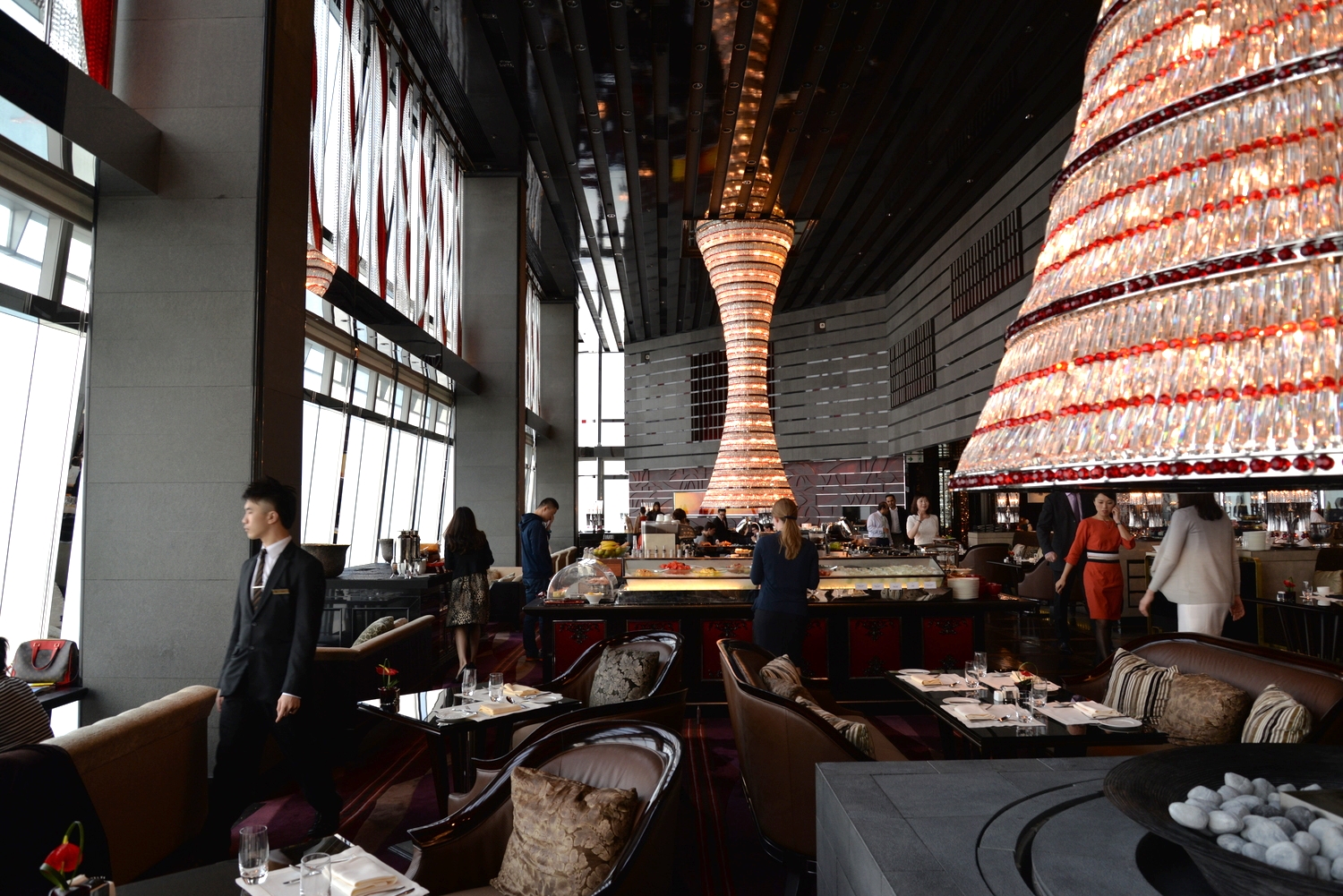
Thinking back, my interest in experiencing Guilin started with the pictures.
I had booked my trip to Hong Kong on a whim about two-and-a-half weeks before going, prompted by Art Basel and a myriad of art festivals. While the rhythms and excitement of a big city appeal to me, I equally crave experiences that show me quiet or rural areas. I love landscape and the countryside as much as I love architecture and design.
As I researched spring destinations in China, Guilin returned in my results, it fit the bill perfectly. I was inundated with image after beautiful image of limestone mountains and lazy rivers, of shingled rooftops and village living.
After mulling around about on various sites and travel forums for housing options, I stumbled across a guest house called Laojia, a restored home in the tiny village of Langshi. The fact that it was only accessible by bamboo boat added to it’s appeal, along with and its Spartan lifestyle and isolated setting, both of which tugged strongly at my sense of adventure.
I fly into Guilin with Dragon Air (awesome) and experience little to no issues on my way. I’m traveling with an extra suitcase, for my take home goodies, so after landing, I wait for the conveyor belt to present me with my suitcase. While I wait, I check to see if there’s free airport wifi, as there had been all throughout Hong Kong.
Ah ha! There’s wifi here!
I connect.
Ah ha! ‘Successful connection’ says the little toast on my screen. And now, the simple test: loading Google.com.
Hmmm. Seems not to be resolving. I'll try again. Hmmm, not working. Let me check my Instagram. Hmm, also not working, Facebook? Huh.
Maybe I missed the sign in page somewhere, I think to myself.
I shrug my shoulders and turn my attention back to baggage claim. When my suitcase finally emerges from its conveyor belt prison and I load it up on a cart and wheel out to meet my prearranged driver for the second leg of my journey.
The driver and boat for getting to Laojia was all wonderfully orchestrated between me and Laojia’s owner, Maarten. After I booked my room, he provided me with a detailed guide to house and the village and gave me all that I needed to know about what to expect in the countryside. The “lady driver” as she is called, was in charge of taking me to Yangdi, where I will a catch a boat bound for Langshi.
With each minute of the long drive, there are less and less cars and more bicycles, tuk tuks and cattle.
Less roads and more mud paths. More Chicken. More farms. More small roadside stands with fruits and local food stuffs. More small domiciles and quiet peoples.
The sun is on it’s way down and through the fog, the landscape is gray and blue and gritty. It’s definitely not Hong Kong, but the area does not feel destitute. Here, things felt gracefully uncomplicated; these roads, these farms, these communities.
We come to the end of a winding road, which turns into a ramp, that leads down into the Li river. There is a man waiting with a bamboo motor boat and two of the most precious little kid’s I've seen. A little boy and a little girl, both about 4 or 5 years of age, are practically beside themselves with excitement at seeing me; this strange foreigner, come to their province in the middle of China. Their father helps get my bags onto the raft and then we push off into the river.
Read more on interesting places to stay: Behind The Unmarked Door

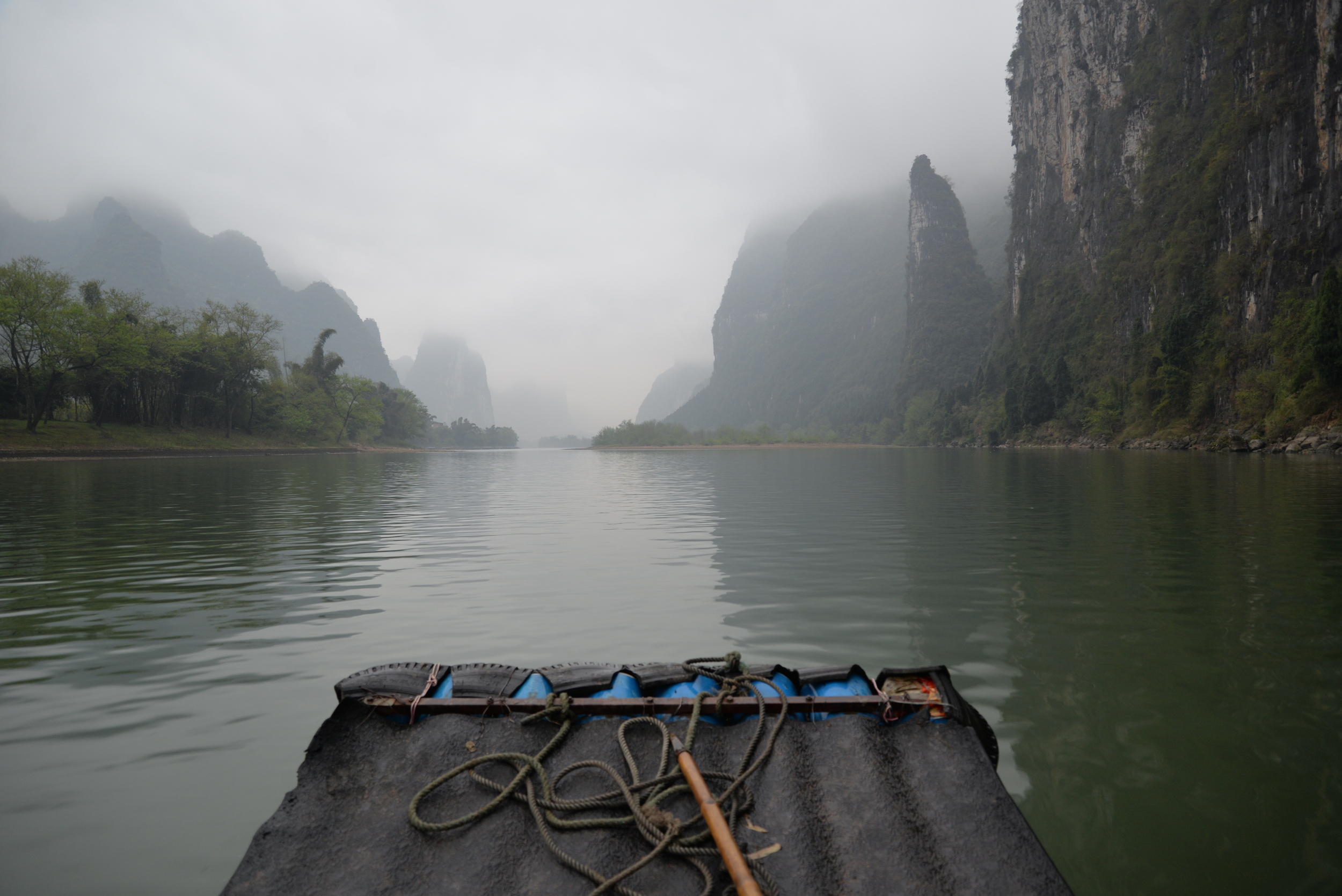
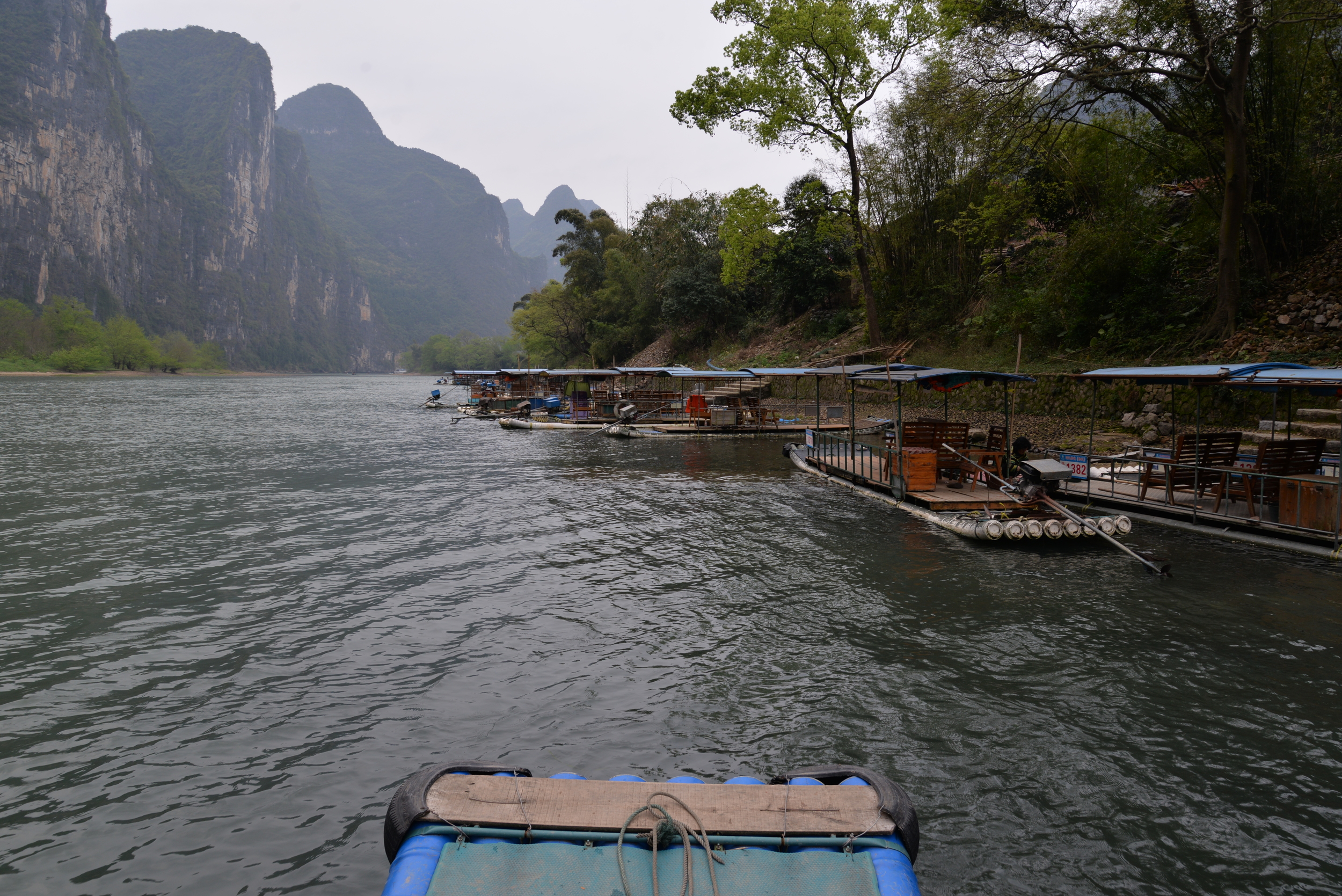
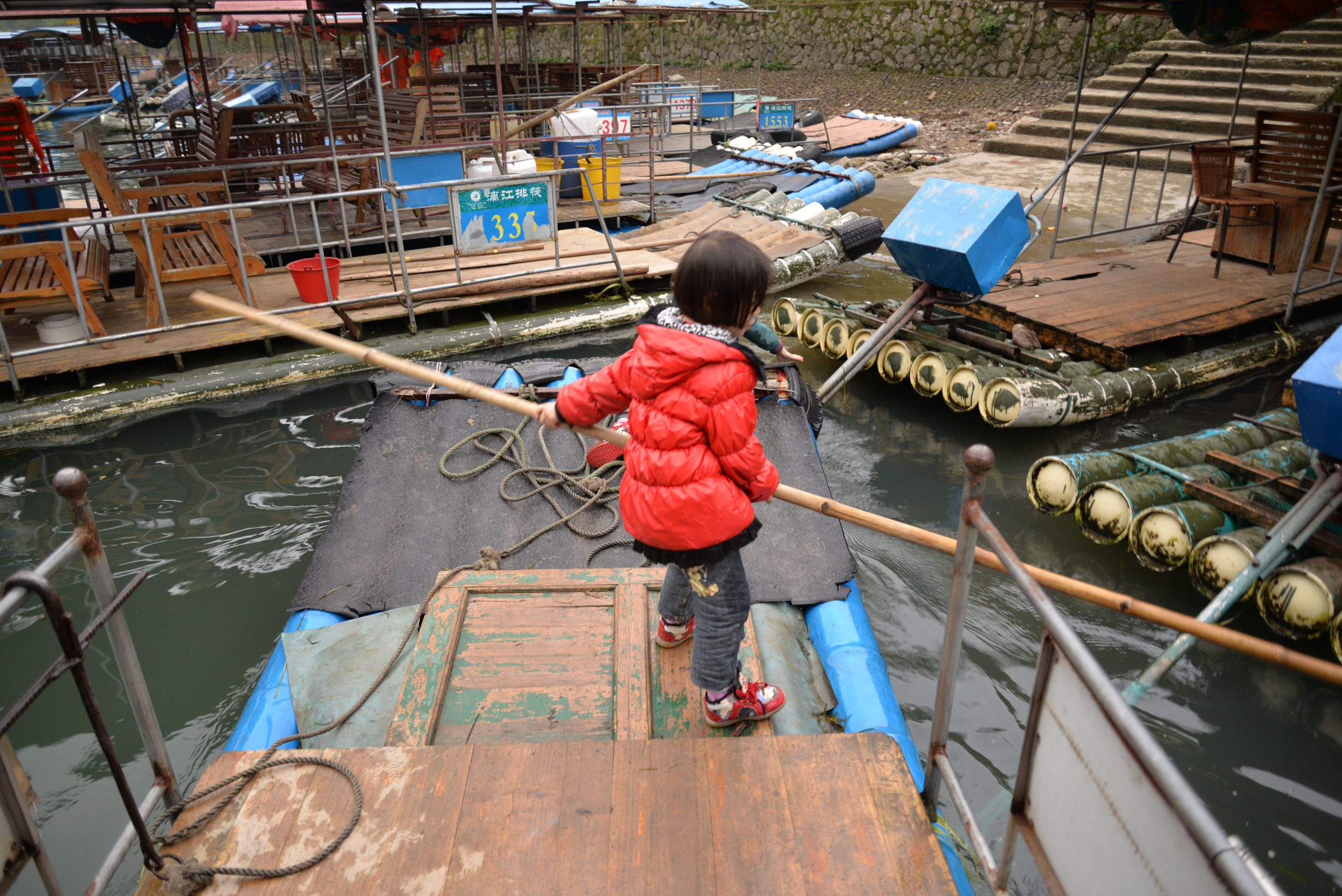
My first glimpses of the river are absolutely marvelous. The mountains are undeniably the inspiration for the numerous ink renderings of the Chinese landscapes, created by the classic artists from the ancient ages.
The Li is an amazing sight to behold, with each peak representing a single a bend in a long jade colored ribbon, up and down, all along the edges of the river. We cut noisily through the glassy water, the mist folding away slowly from us, revealing new forms for me to stare and wonder at.
As I snapped away on my camera, the kids are mighty curious. The little girl plops herself down, right next to me, basically in my lap if she could, and wants to see what I shooting. I snap a couple pictures of her while she does her best to put on a show, and it’s over from there!
Every few seconds she wants to strike a new and cute pose for me, and I oblige her, taking pictures and laughing as she tries to mimic my thumbs-up gesture or test out a new position to make me smile.
Before leaving the Ritz, I had bought a little box of macaroons and thought this was a perfect offering to my tiny friends. I first go to the father and show him the macaroons. I try to indicate that I want to give them to the kids, and I want his permission.
He nods at me, the kind of nod that says, I have no idea what you're saying but go ahead, so I turn to my little poppers and let them each pick a color. They immediately nab their favorite colors and then the little girl takes one for dad. He smiles and seems to thank me.
Arriving at the little fishing village is a cinch, with the ride not being much longer than ten or so minutes.
We docked alongside a bunch of other boats, along the river's edge, down the bank from a steep set of stone stairs.
Up, up the stairs we go; the driver, carrying my light-weight, carry-on and me struggling with the larger suitcase (with the little girl trying her precious best to lift it from below).
Moments later, we pass through a tiny archway and into a little alley. One turn left and we arrive at Laojia.
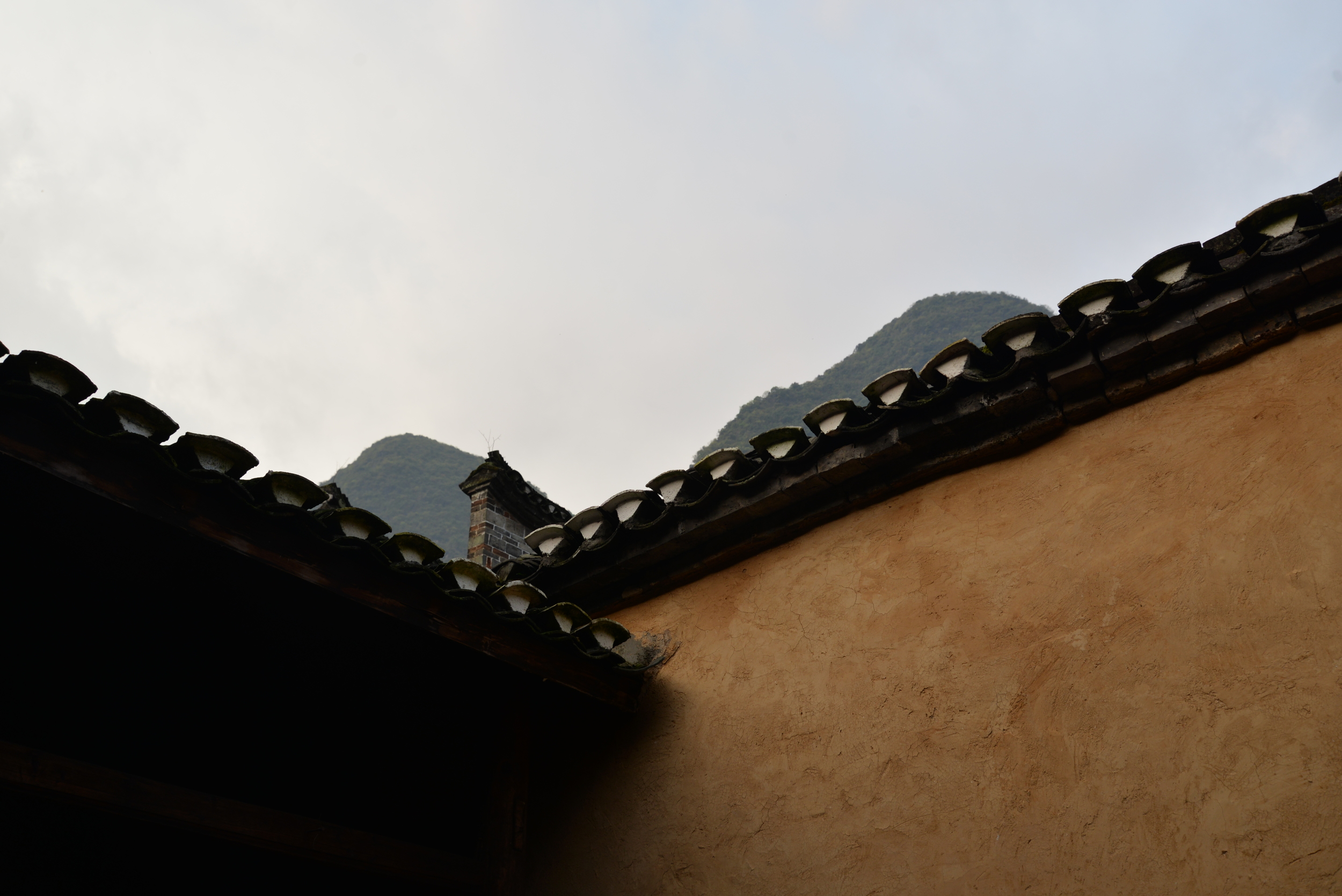

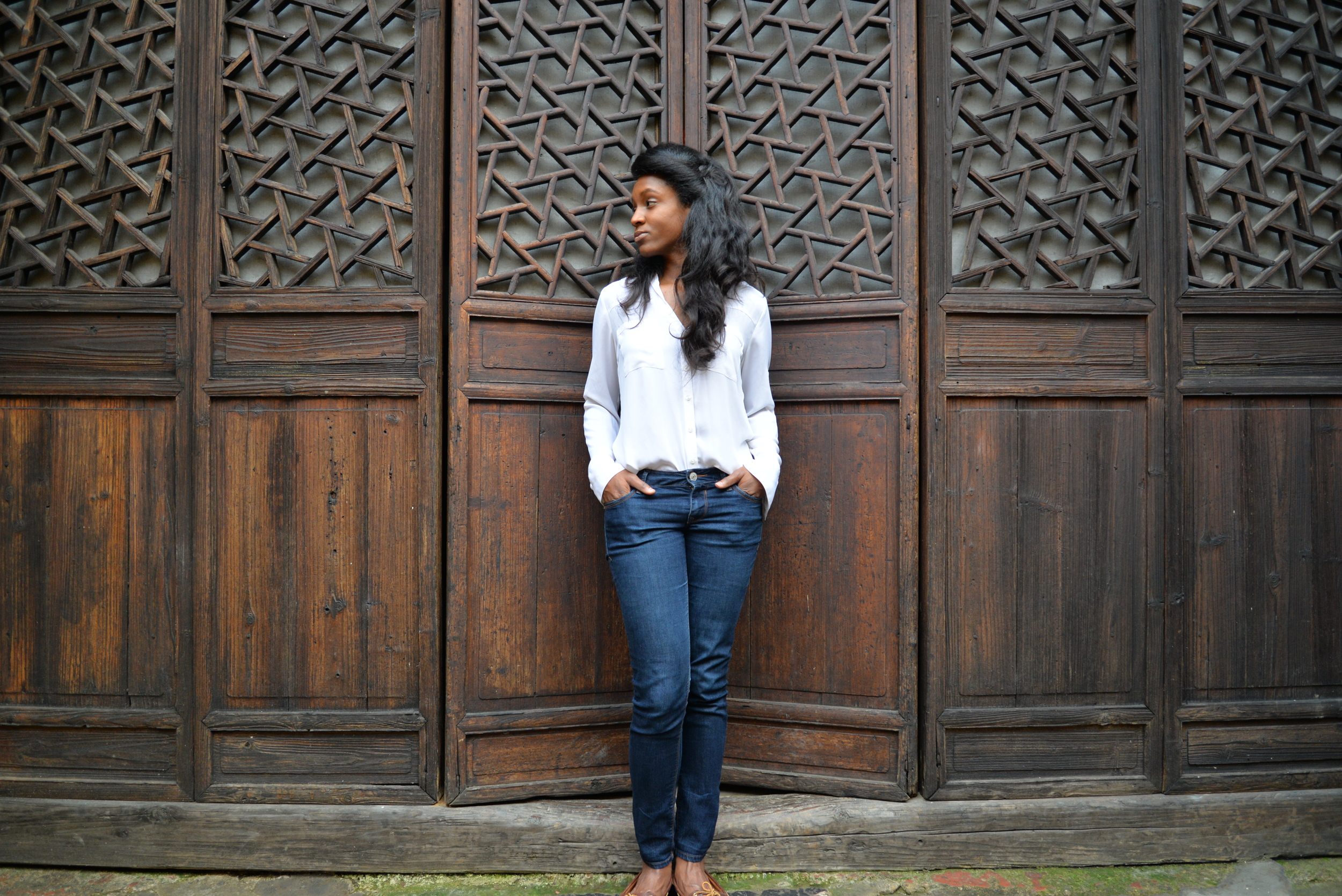

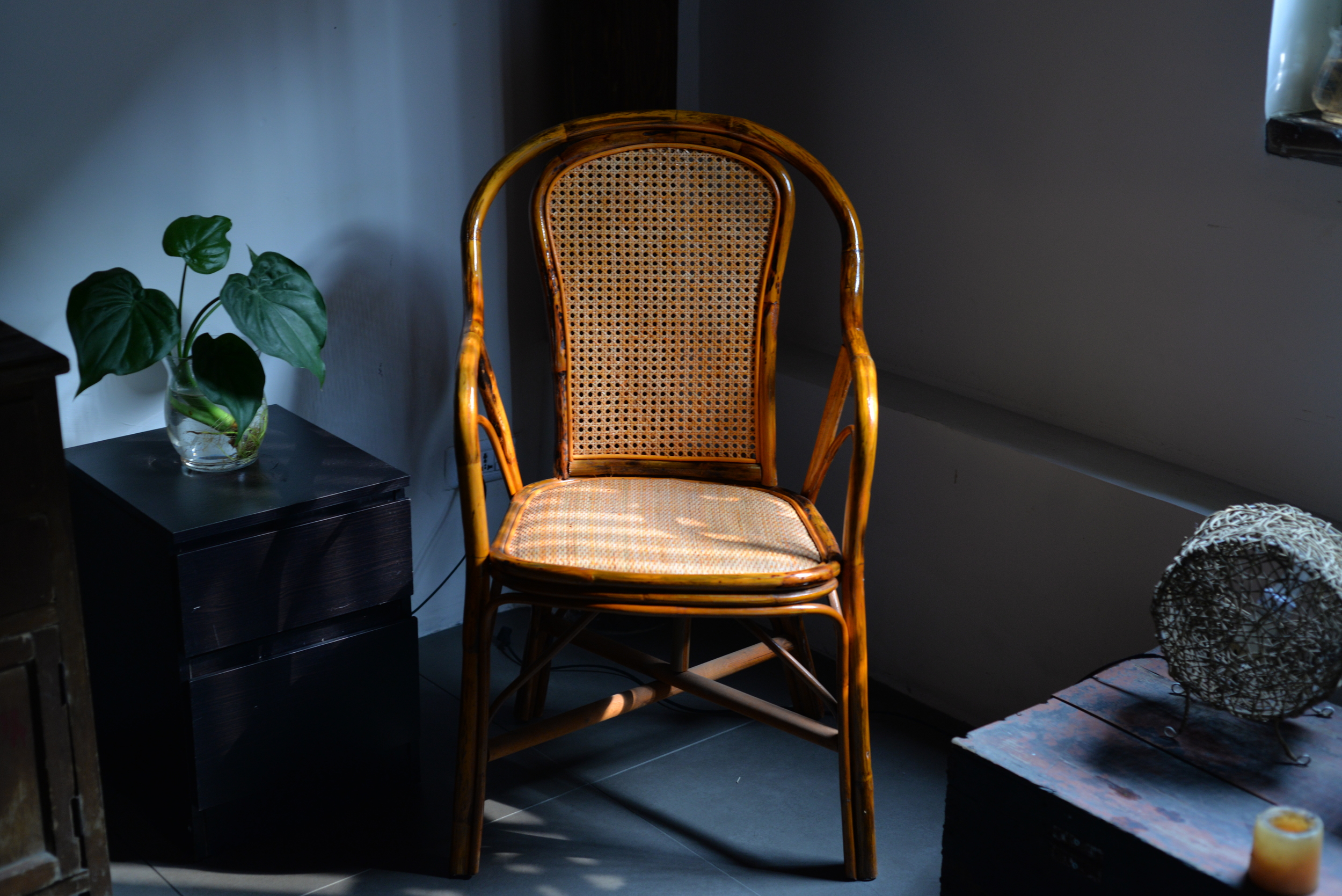
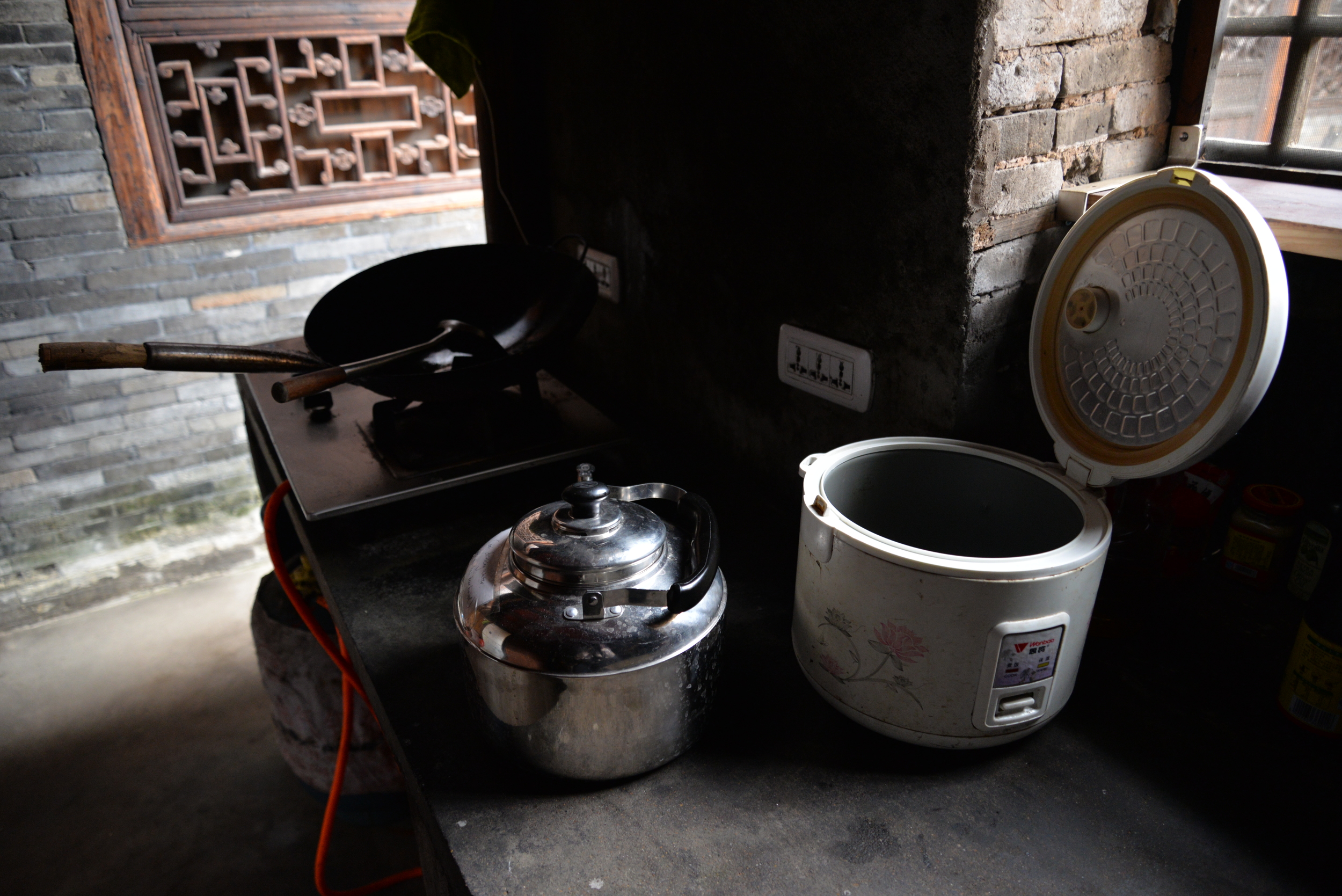
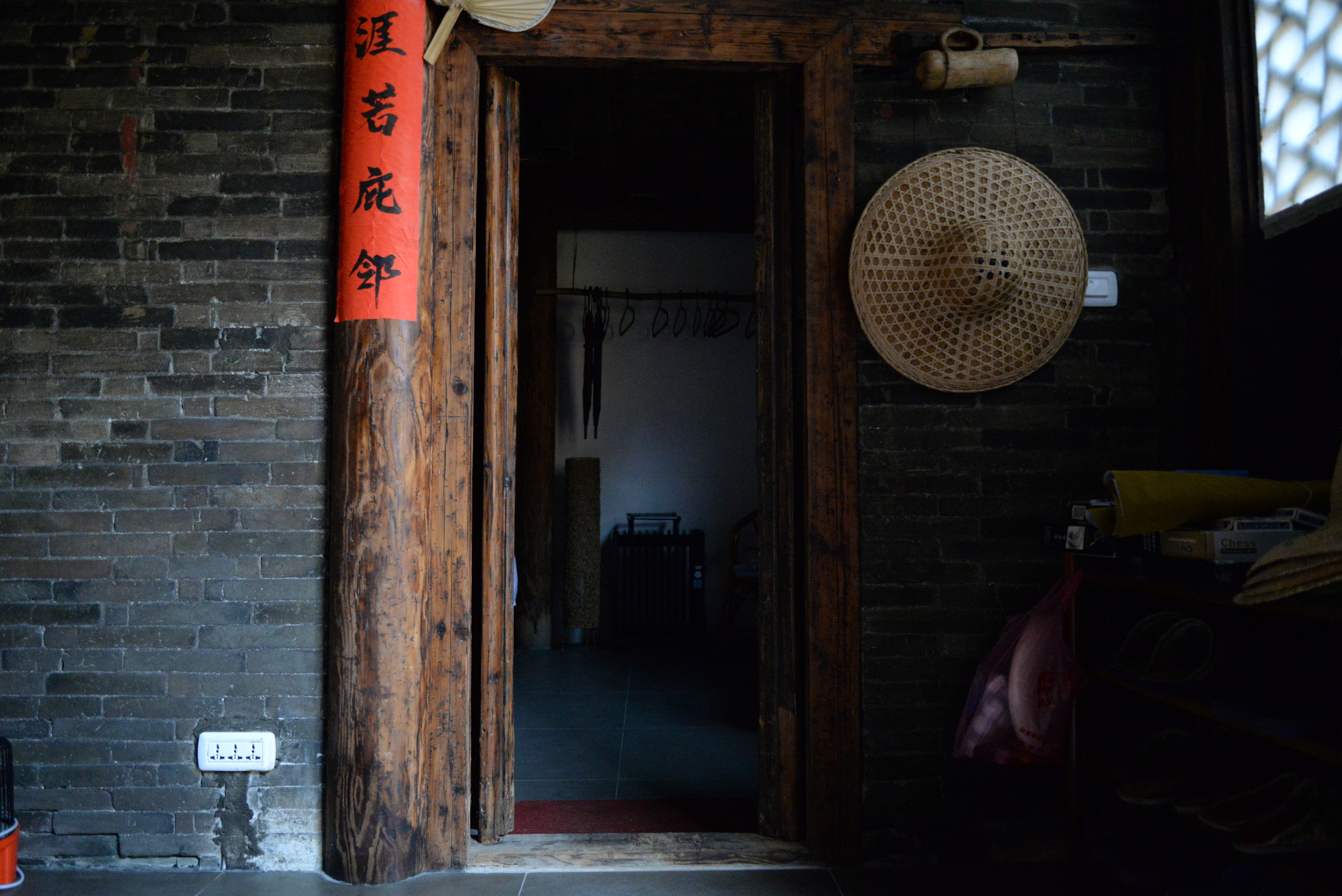
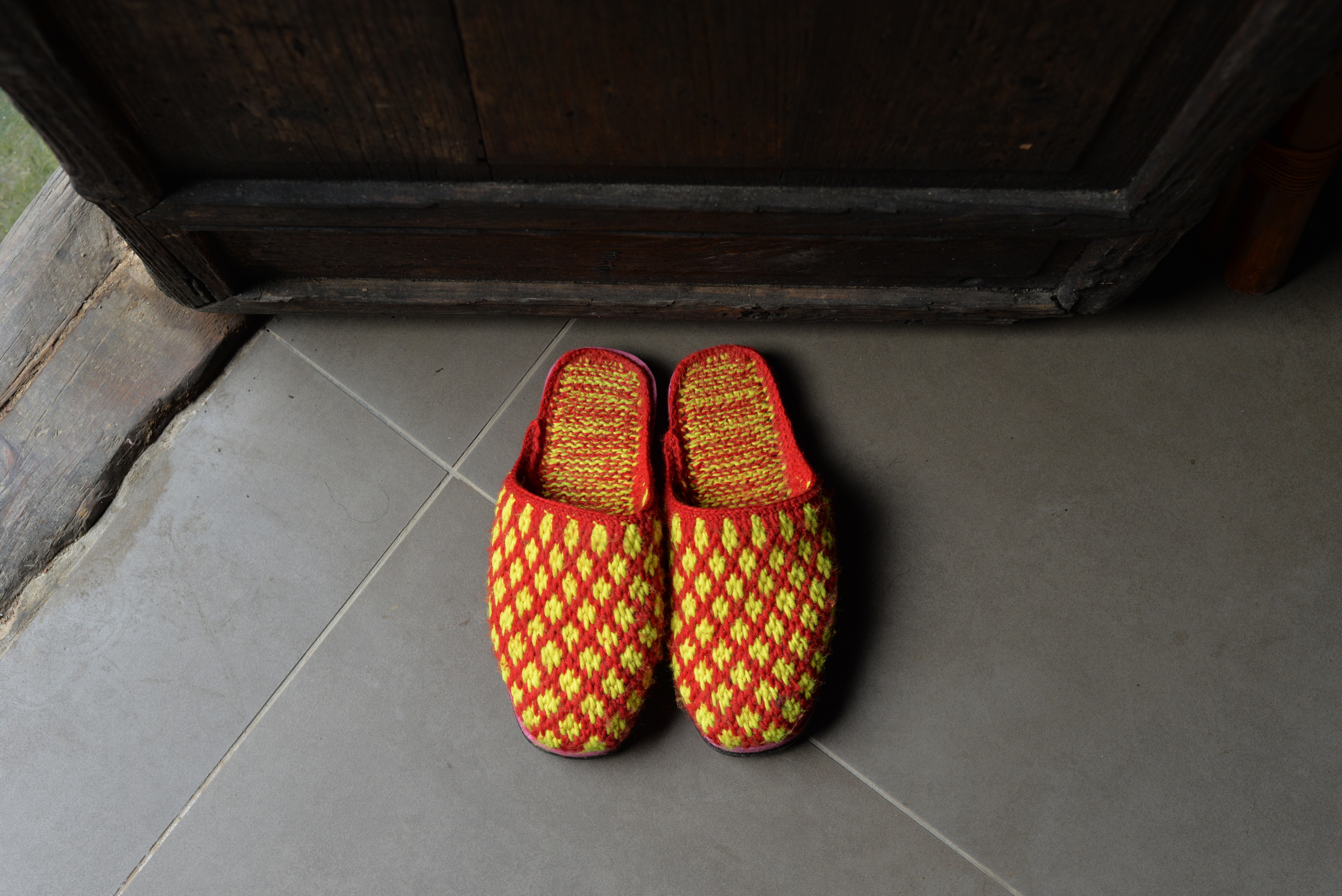
Its entryway is buttressed by two wooden doors which open onto a simple, stone courtyard. The enclosure is lined with a variety of plants and dotted with a few woven and wooden chairs for sitting. The stone walls that comprise the main outer structure of the house, carry the patina and grit of more than 150 years of weathering. The rooftop is sloped with closely knit, black and gray shingles, whose design is immediately recognizable as both historic and traditional.
Haibo, the care taker, was there to greet me with a big smile. Haibo is younger man, maybe in his late 20s, with a kind disposition and an easy smile. He welcomes me and waves me through the main doors and into the open common room. I look around in awe at the wooden detailing, the high ceilings, the inked writing here and there and savor the dulcimer tones of a Chinese ruan playing softly from a stereo. Haibo points me into my sparse but quaint room and I set down my heavy bags.
The sleeping quarters features a large bed palette, with a simple white comforter and pillows, along with a large white net hanging above it. Across from the bed there is a little table and small personal sink. There is also a space heater and a bamboo clothing rod for hanging my clothes. Adjacent to the sleeping area, there is a meditation and study room, separated by a sturdy red blanket, which provides a space for yoga and thoughtful work. It faces the back of the residence, but still lets in light during the day though its medium sized window.
Haibo then gently takes me on a tour of the house. He shows me the kitchen where guests can freely cook or prepare a simple meal from the pantry supplies; the bathroom, which has a European style toilet, surprisingly; and the shower which has a modern, rain style shower head.
Dinner was already prepared and waiting for me by the house cook Xiaomo, which included a beautiful family style bowl of green beans, ginger, garlic and rice. All the meals here at Laojia are vegetarian, but the undemanding fare is so tasty that I hardly think I’ll miss meat for a few days.
I take some time to walk around Langshi afterwards. The grayish clouds cast a diffused light over the mostly gray buildings and alleyways.
The village is an interesting mixture of old homes and ancient domiciles like Laojia, nestled between a few more modern structures. Children, chickens and chirping from songbirds provide the audio backdrop, as villagers young and old peer out of their doorways at the new arrival.
I get a mixture of smiles, blank stares and curious looks. I return each glance with a pleasant nihao.
Read more on adventurous places to visit: To The Edge of the Desert
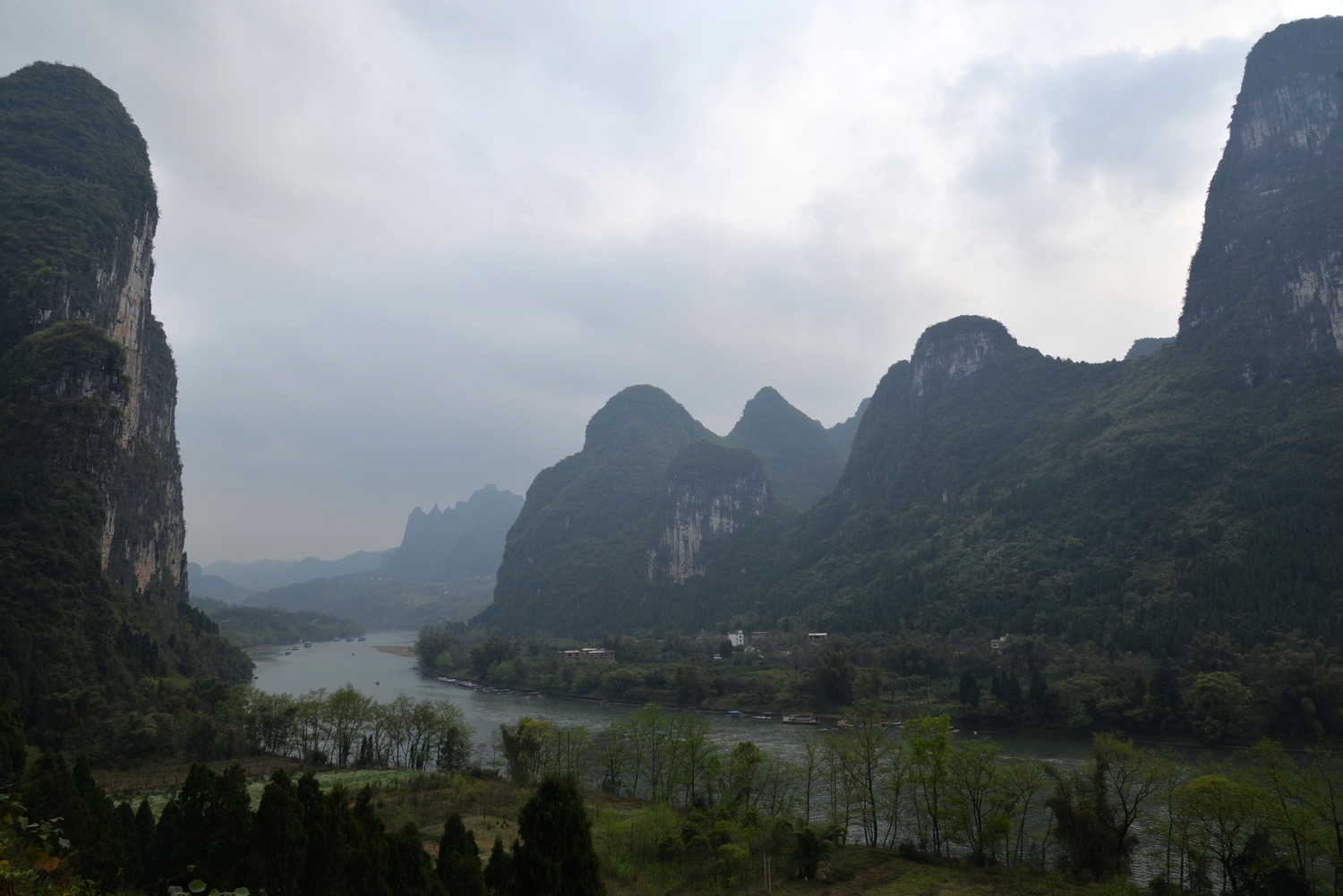

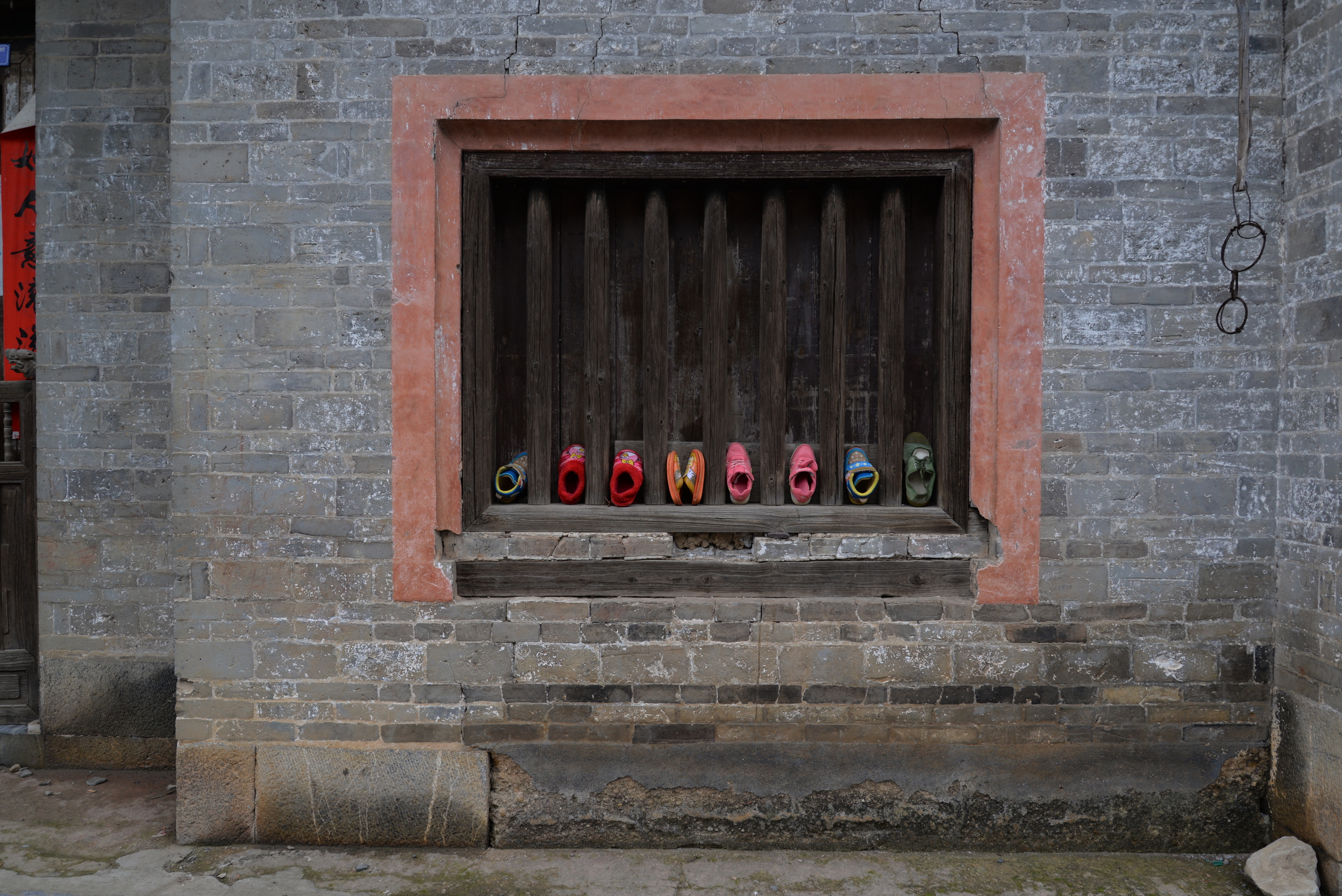
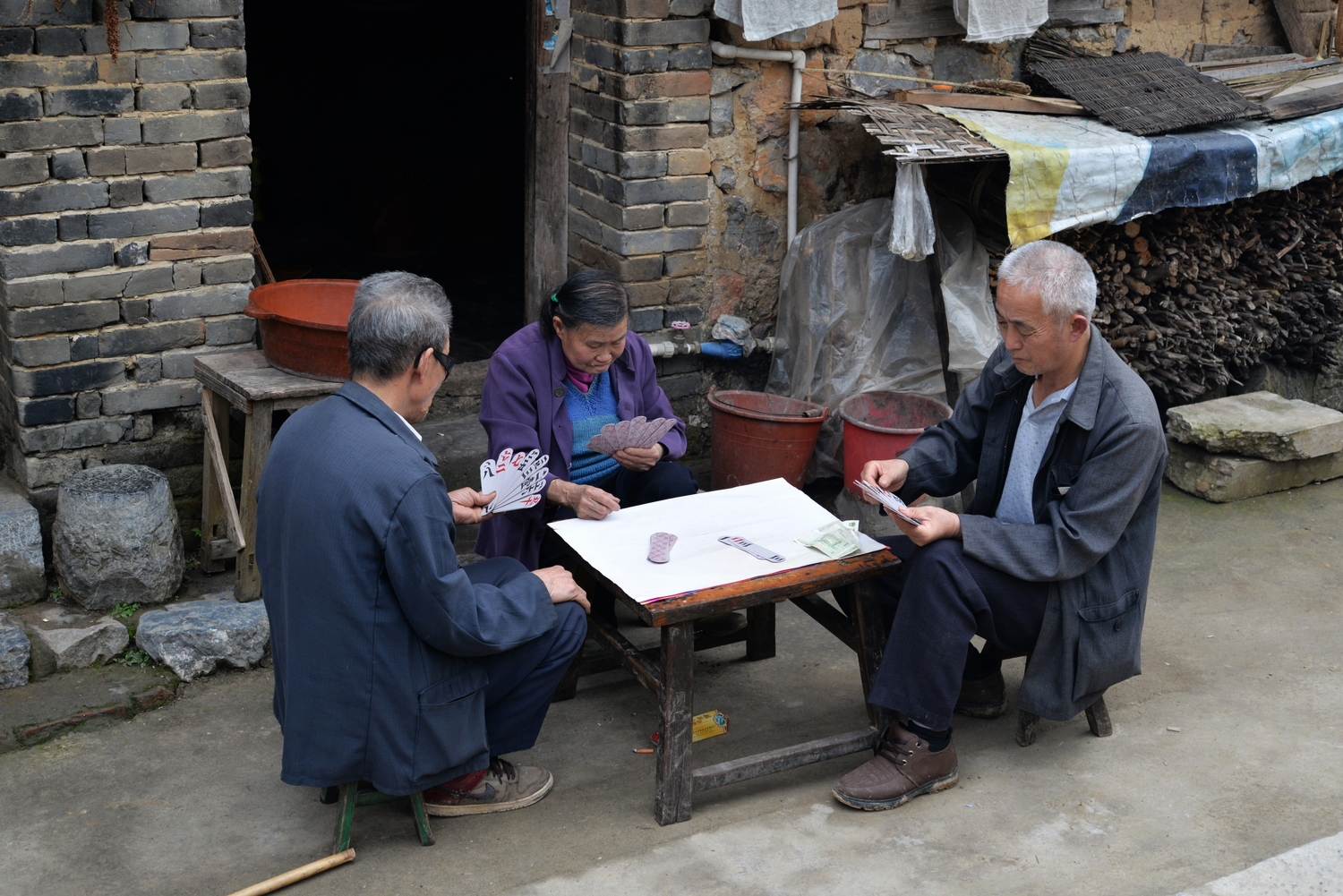
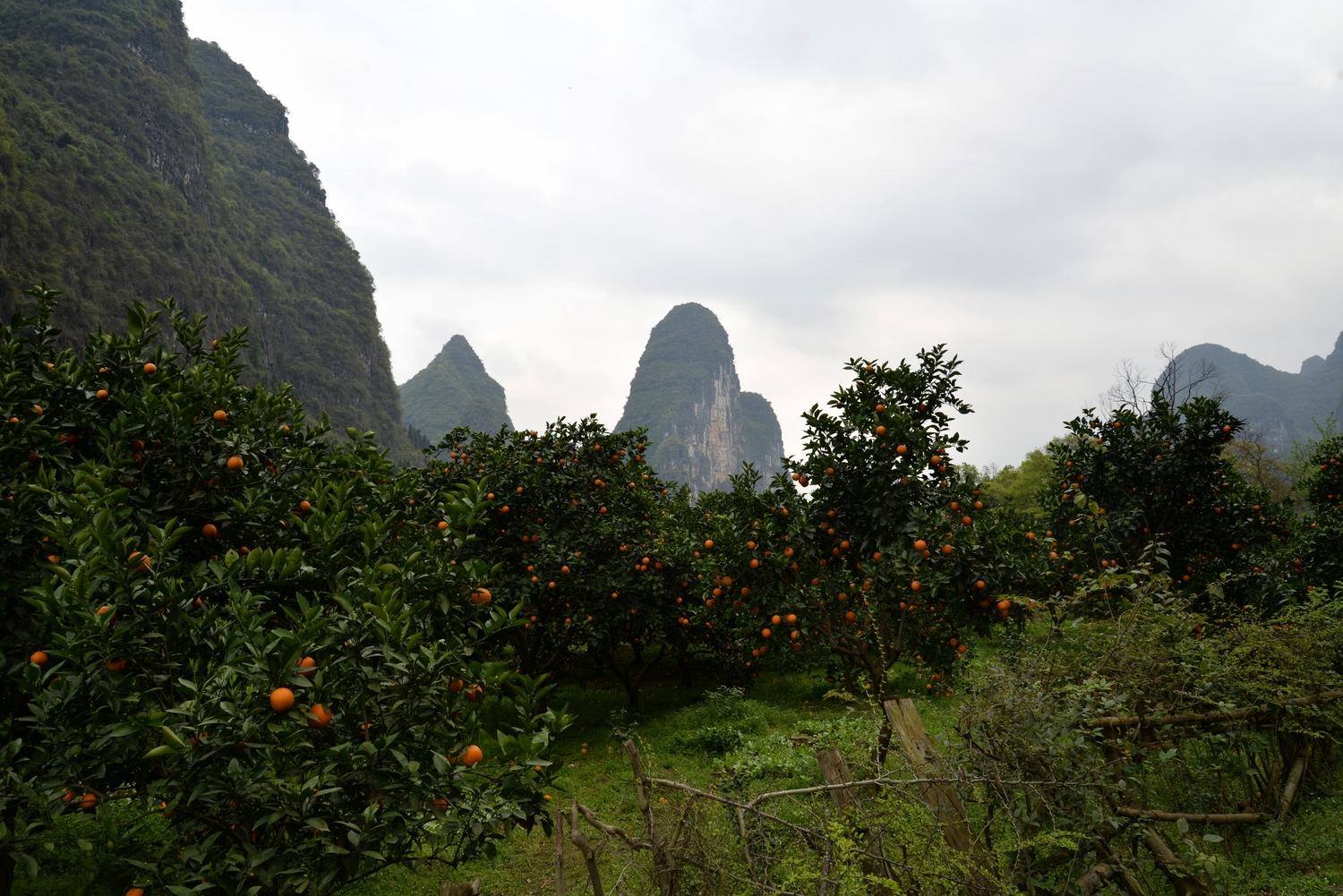
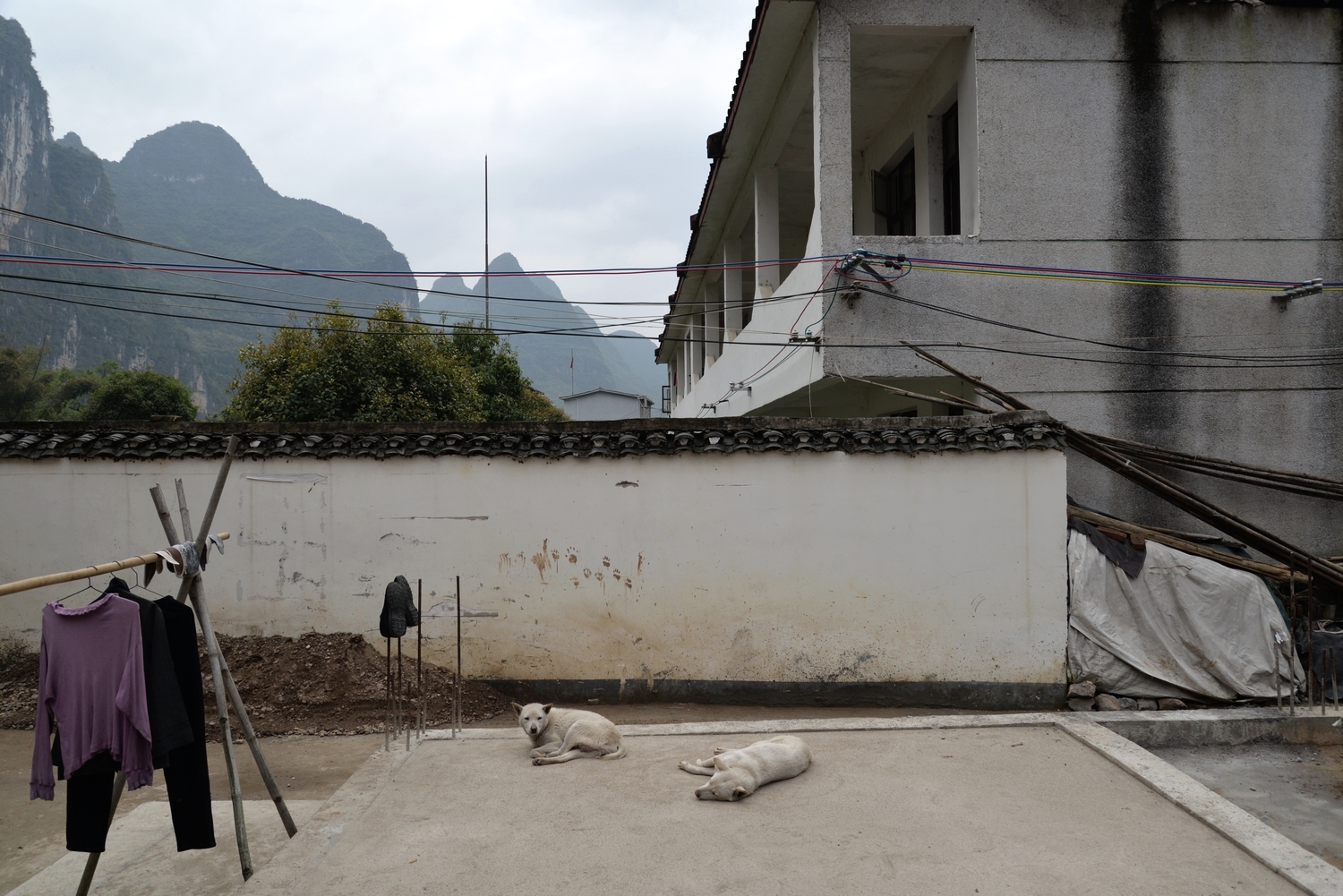

Later at Laojia, I meet Jean and Jesus, a wonderful couple who are staying at the house as they travel through Guilin on their way for an interview in Shanghai.
Haibo bids us goodbye, after confirming with me my itinerary for the next day, which included a boat ride to and from the neighboring community, Xingping (pronounced ‘shing-ping’) followed by a hike to see goats in the mountains.
Over dinner, it’s Jean who reveals the reason for my internet misadventures since I arrived in mainland China. Apparently, at the airport, I was connected to the internet, but since I was attempting to access non-government approved sites, they weren't resolving. Google, Facebook, Instagram? All on the no-no list.
“How the heck are other instagrammers posting pics about Guilin, from Guilin then?” I ask, dumbfounded.
Jean explained that they must have a VPN to mask their IP address so that they can get around the sensors.
I resolved immediately to acquire a VPN connection, but then quickly realize that in order to do so, I’d have to find a government approved site that would allow access to that.
Of course, there isn’t one (I would have had to do that before I got to the mainland) so now, my time in Guilin would be spent being even closer to nature than I had originally thought.
With the meal complete, we all turn in. I take a wonderfully hot and very satisfying shower in the little bathroom. I slip my feet into the cozy handmade slippers they provided and shuffle back into my room.
This is the country so there are, of course, a few bugs (large and small) that I encounter in the house, but nothing that I can’t handle (or kill if need be). I turn on my space heater, click on my tablet, slide into the bed and sleep well.
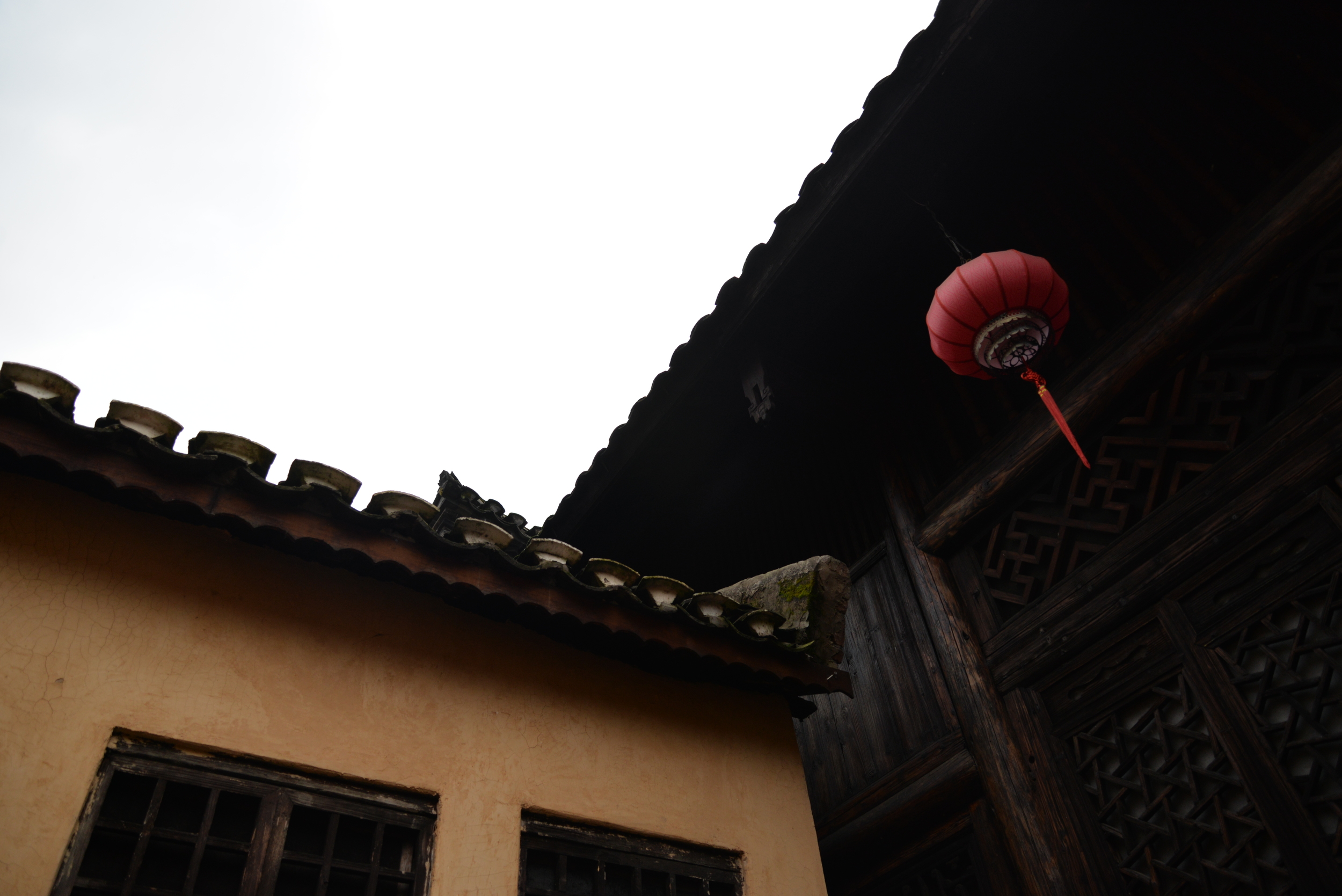


The next morning, I wake very early to the most beautiful blue sky, ringed by little white clouds and towering green mountains.
The village is bustling with random noises from animals, conversations of villagers and the laughter of children playing.
I sip freshly brewed green tea in the unassuming outdoor alcove, and nibble on a remaining Pierre Hermes macaroon. I am glad to have had the Ritz experience as I am glad to be here at Laojia. I return to the guide that Maarteen provided, and reread the first few opening paragraphs:
"On behalf of Maarten and Eric and Haibo (海波), welcome to our house, Laojia 老家. We call it Laojia for two reasons. The first is to represent the conversational Mandarin meaning of laojia, which is ‘hometown’. Even if you spend only a few days here, we hope to create a hometown kind of atmosphere for our guests."
"The second being that lao 老 means ‘old’, and jia 家 means ‘home’. Since this home is more than 150 years old, it seems fitting. We are honored to welcome you and wish for you to have a great experience."
I am honored too, Laojia. Thank you for providing me this opportunity to be adventurous and unconventional.
It is truly a home in the middle of this unfamiliar, and off-the-beaten-path piece of the world.
Read more amazing rural experiences: The Most Beautiful Thing
House Laojia
stay// House Laojia is located in the village of Langshi 浪石. To reach it, you must first make your way to Yangdi Harbor. From there, they will have a local boat driver pick you up and ferry you down the river to Langshi.
itinerary // 2 days and 2 nights. Excellent location for hiking and exploring the beauty of the Guilin mountains. contact // info.laojia@gmail.com
“During the renovation we strove to source building materials locally, though with many exceptions including concrete, steel, and appliances. The same applies for food...we cook vegetarian meals here, and [purchase] only locally grown produce, including vegetables, tofu, eggs, rice, fruit, and peanuts.”
Shop our limited supply of beautiful Chinese ink brushes, hunted in Guilin.











